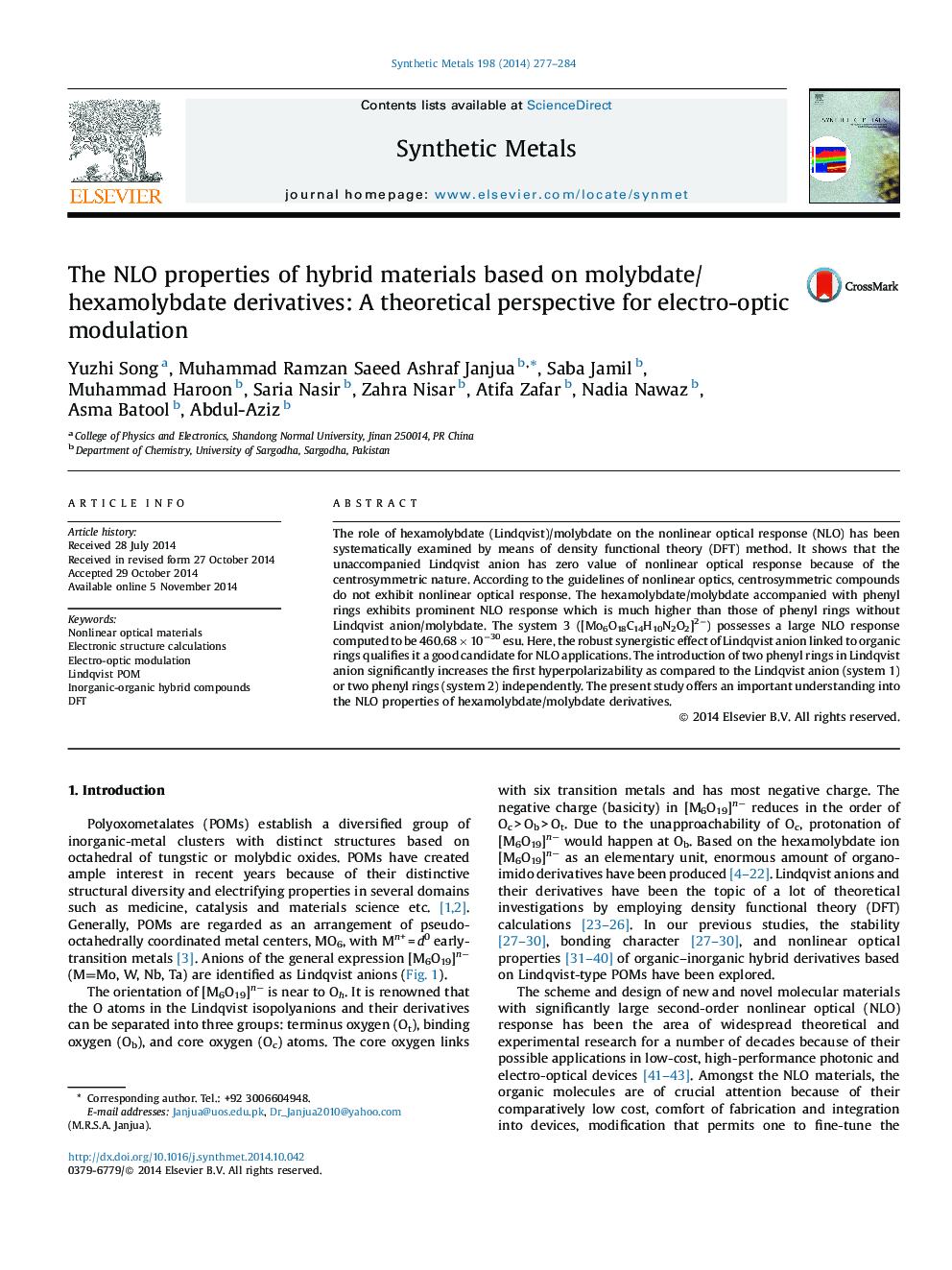| Article ID | Journal | Published Year | Pages | File Type |
|---|---|---|---|---|
| 1440747 | Synthetic Metals | 2014 | 8 Pages |
•The functionalization of the [Mo6O19]2− anion has been studied by using DFT.•The present study discloses the origin of NLO response.•Molybdate accompanied with phenyl rings exhibits significant NLO response.
The role of hexamolybdate (Lindqvist)/molybdate on the nonlinear optical response (NLO) has been systematically examined by means of density functional theory (DFT) method. It shows that the unaccompanied Lindqvist anion has zero value of nonlinear optical response because of the centrosymmetric nature. According to the guidelines of nonlinear optics, centrosymmetric compounds do not exhibit nonlinear optical response. The hexamolybdate/molybdate accompanied with phenyl rings exhibits prominent NLO response which is much higher than those of phenyl rings without Lindqvist anion/molybdate. The system 3 ([Mo6O18C14H10N2O2]2−) possesses a large NLO response computed to be 460.68 × 10−30 esu. Here, the robust synergistic effect of Lindqvist anion linked to organic rings qualifies it a good candidate for NLO applications. The introduction of two phenyl rings in Lindqvist anion significantly increases the first hyperpolarizability as compared to the Lindqvist anion (system 1) or two phenyl rings (system 2) independently. The present study offers an important understanding into the NLO properties of hexamolybdate/molybdate derivatives.
Graphical abstractLindqvist type anion [Mo6O19]2−: The functionalization of the [Mo6O19]2− anion with organic ligands leads to significant increase in NLO response of compounds. The replacement of one or several oxo ligands by other ligands allows the properties to be tuned and provides a route to the application in supramolecular chemistry through the introduction of suitable organic ligands.Figure optionsDownload full-size imageDownload as PowerPoint slide
